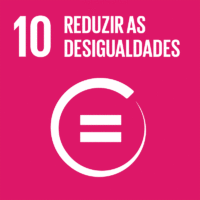Ciência_Iscte
Publicações
Descrição Detalhada da Publicação
Remarriage and stepfamilies in the ‘Western Islands’ of Europe: the rural Azores of Portugal in the 18th and 19th centuries
Título Revista
History of the Family
Ano (publicação definitiva)
2022
Língua
Inglês
País
Países Baixos (Holanda)
Mais Informação
Web of Science®
Scopus
Google Scholar
Esta publicação não está indexada no Overton
Abstract/Resumo
This article uses parish registers, libri status animarum, and notarial records from the 18th and 19th centuries to assess the extent to which the rates of remarriage of widows and widowers in the Azores were similar to those of mainland Portugal. We consider that, despite the clear obstacles to marriage on the islands (due especially to male emigration) remarriage was in fact frequent and created stepfamilies. Factors such as social tolerance, sexuality outside of marriage and the lack of stigmatization of remarriage may provide part of the explanation. The article shows that a high proportion of widows gave birth to children during their widowhood and out of wedlock. Further, widows frequently attracted men of a much younger age as spouses, which again was socially tolerated. After remarriage by a widowed parent, the general pattern was to raise stepchildren in the family home. Remarriage rarely led to the departure of a stepchild under 16 from the household. The article considers the life trajectories of children who suffered parental loss and the half-orphans whose parents subsequently remarried. Moreover, a significant number of stepfamilies were formed by single mothers, who later married a man who was not the biological father of their child(ren). Beyond the qualitative analysis of parental loss and remarriage, the article outlines the motives of the widowed parents who sought to remarry quickly and follows some stepfamily experiences to detail the moments of transition and living arrangements of stepfamilies. The parish records combined with documents from notaries allow a qualitative understanding of some of the remarried spousal partnerships as well as the stepparent-stepchild relationships developed over decades.
Agradecimentos/Acknowledgements
The translation of this text was supported byFundação para a Ciência e Tecnologia (FCT) through the Strategic Funding of themR&D Unit CIES - Iscte, Ref. UIDB/03126/2020
Palavras-chave
Orphans,Single mothers,Illegitimacy,Widowhood,Stepchildren
Classificação Fields of Science and Technology
- História e Arqueologia - Humanidades
Registos de financiamentos
| Referência de financiamento | Entidade Financiadora |
|---|---|
| UIDB/03126/2020 | Fundação para a Ciência e a Tecnologia |
Projetos Relacionados
Esta publicação é um output do(s) seguinte(s) projeto(s):
Contribuições para os Objetivos do Desenvolvimento Sustentável das Nações Unidas
Com o objetivo de aumentar a investigação direcionada para o cumprimento dos Objetivos do Desenvolvimento Sustentável para 2030 das Nações Unidas, é disponibilizada no Ciência_Iscte a possibilidade de associação, quando aplicável, dos artigos científicos aos Objetivos do Desenvolvimento Sustentável. Estes são os Objetivos do Desenvolvimento Sustentável identificados pelo(s) autor(es) para esta publicação. Para uma informação detalhada dos Objetivos do Desenvolvimento Sustentável, clique aqui.

 English
English




